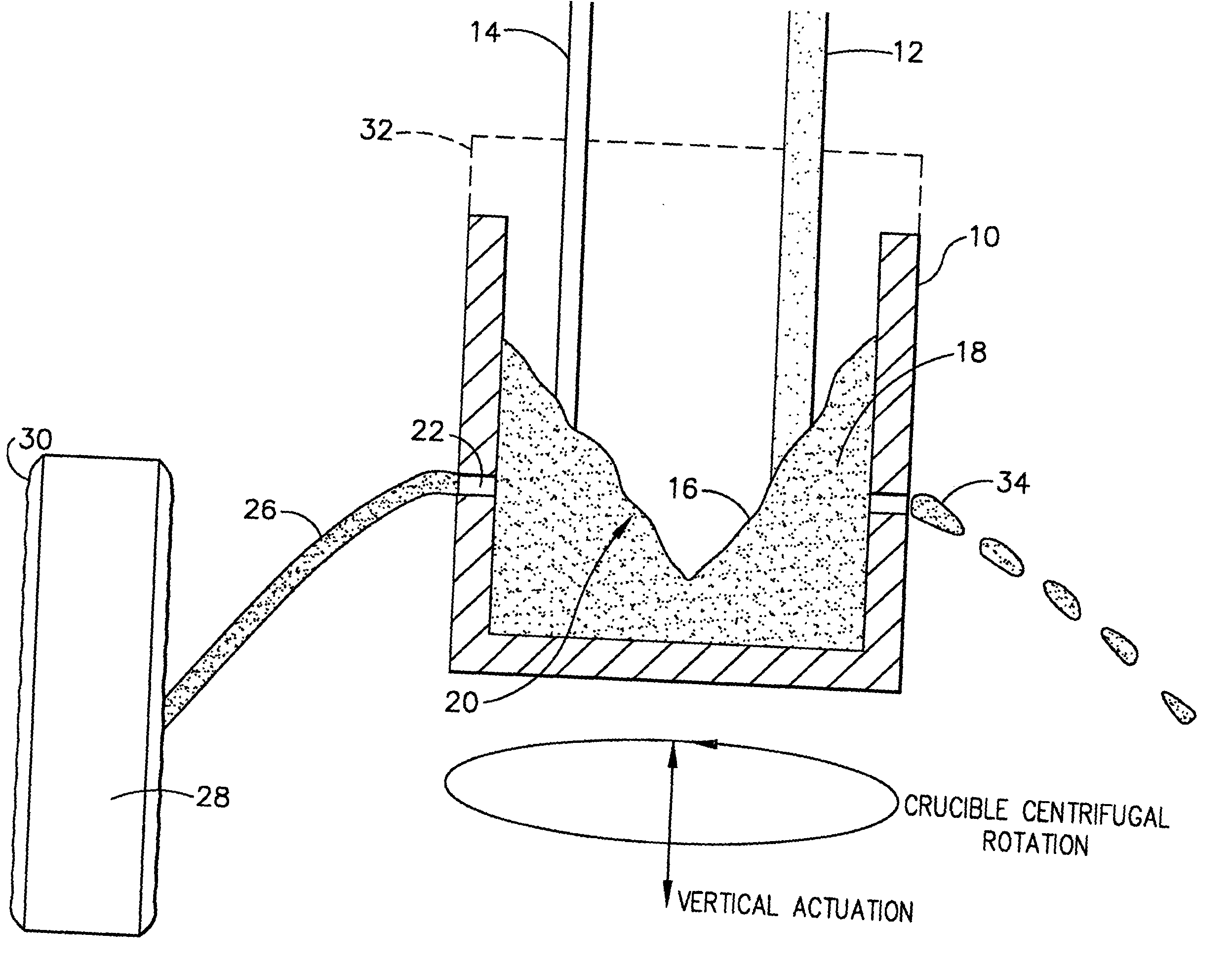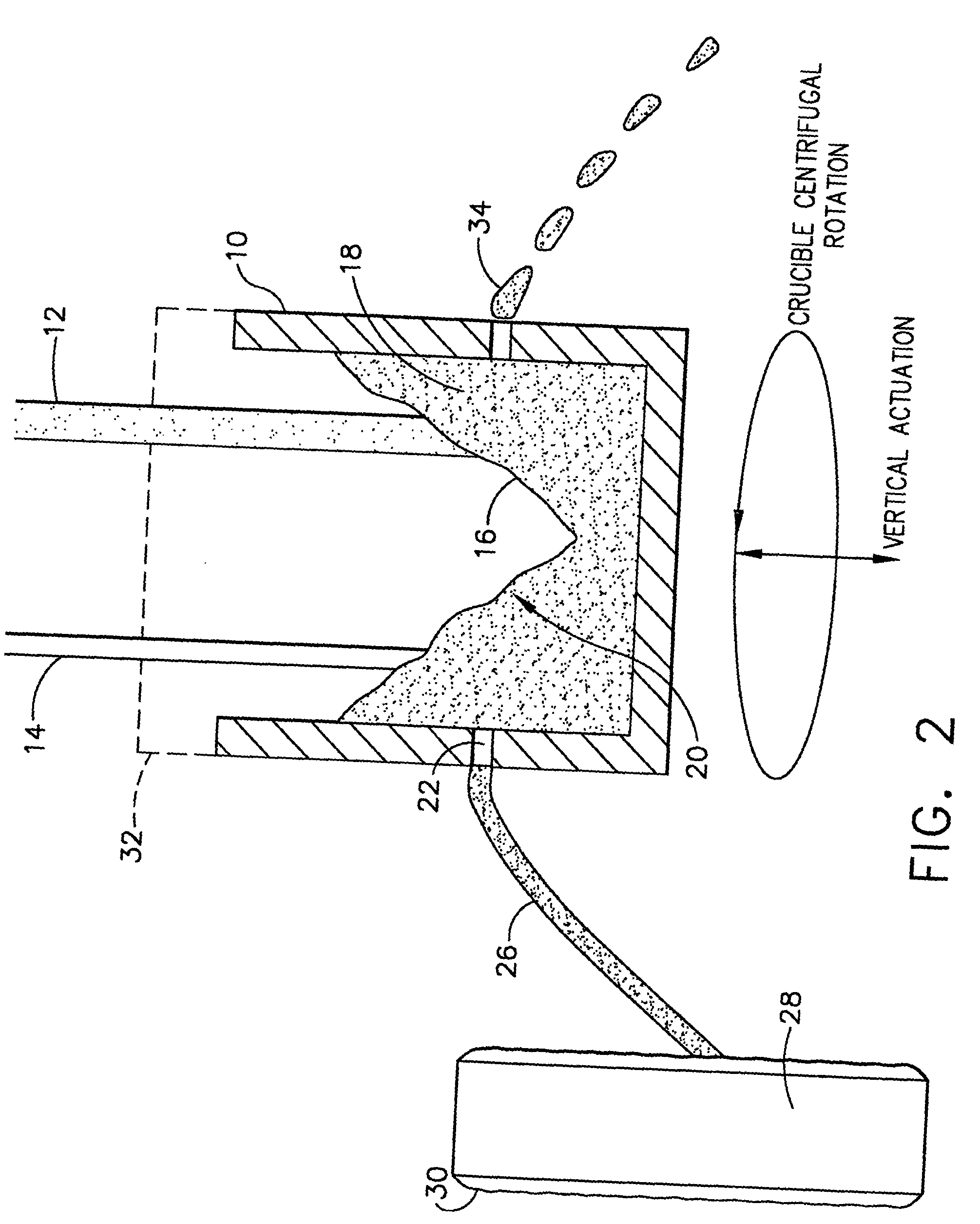Process for producing materials reinforced with nanoparticles and articles formed thereby
a technology of nanoparticles and reinforced materials, which is applied in the field of forming dispersions-strongened materials, can solve the problems of limited dispersion-strongening phase types, and achieve the effects of avoiding or at least reducing the cost of consolidation, machining, and other operations, and rapid solidification
- Summary
- Abstract
- Description
- Claims
- Application Information
AI Technical Summary
Benefits of technology
Problems solved by technology
Method used
Image
Examples
Embodiment Construction
[0011]FIGS. 1 and 2 schematically represent two techniques of this invention by which dispersion-strengthened materials are produced, in which the dispersion reinforcement material includes or is formed entirely of nano-sized dispersoid particles (nanoparticles). In the embodiment represented in FIG. 1, nanoparticles 12 and a molten material 14 are delivered in separate streams to form a pool 16 of molten composite material 18 contained by a crucible 10. As the nanoparticles and molten material 12 and 14 are added to the pool 16, the crucible 10 is caused to spin, rotating about its vertical axis, such as by mounting the crucible 10 to a spinning pedestal (not shown). As will be known by those skilled in the art, crucible materials, crucible constructions, and equipment suitable for this purpose will depend on the type and amount of materials used.
[0012] The crucible 10 is caused to spin at a sufficient rate so that the centrifugal force applied by the nanoparticle-filled molten co...
PUM
| Property | Measurement | Unit |
|---|---|---|
| size | aaaaa | aaaaa |
| size | aaaaa | aaaaa |
| volume fraction | aaaaa | aaaaa |
Abstract
Description
Claims
Application Information
 Login to View More
Login to View More - R&D
- Intellectual Property
- Life Sciences
- Materials
- Tech Scout
- Unparalleled Data Quality
- Higher Quality Content
- 60% Fewer Hallucinations
Browse by: Latest US Patents, China's latest patents, Technical Efficacy Thesaurus, Application Domain, Technology Topic, Popular Technical Reports.
© 2025 PatSnap. All rights reserved.Legal|Privacy policy|Modern Slavery Act Transparency Statement|Sitemap|About US| Contact US: help@patsnap.com



